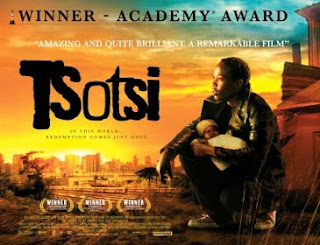The fashion industry has boomed all over the country of SA with urban apparel designers as a result of this Kwaito craze. Designers such as Stoned Cherrie, Loxion Kulca, and Sun Goddess to name a few.
http://lesaniblog.files.wordpress.com/2007/10/stoned-cherrie2.jpg
https://blogger.googleusercontent.com/img/b/R29vZ2xl/AVvXsEhrKTm9VMzOEHcv78oGfVKSFa5BE7fBQjboDNnx8IwSr-jgeULJBXW_F6kJ40BACB5BjLMHzUxfY9ZT8L_lRDebDUZK4gWigfNuBa0QoDGY3XThaOAIVc8Ga4lYD6sSkS8gTiK7ab9lyO8/s1600/_MG_0922.jpg
http://www.represent.co.za/wp-content/uploads/2007/02/sun-goddess-compressed.jpg
The countdown to the launch of a band who have created an entirely new genre, KwaiCore, an amalgamation of Kwaito and Hardcore Punk in South Africa. Meet the band who have jump-started this craze. Breathe KwaiCore speaks about racial and societal issues, South African news, the music industry, SA bands and their increasing international presence, philosophy, and the biography of Light Hour showing the power of collective intention.
Wednesday, 3 April 2013
Bringing back Brenda
Sound evolution
The unmistakable Kwaito sound originally came from using European instruments that Black African laborers had at their disposal after gold was found in the city of Johannesburg. A common characteristic of the Kwaito sound is the dialogue between a man and a woman with the woman mostly repeating the man's lines. It's usually distinguished as dance music with light subject matter and not really sung. It's more of a rhythmic speech. Kwaito usually engages with its audience by encouraging them to interact through a call-and-response manner. The artist really tries to engage its listeners.
So, what's the point?
Well, ironically, not only does Kwaito resist a sense of Western-based oppression by remaining apolitical, but it also resists trends and constant presence of western influence in and of itself via its mode of production. Mhlambi affirms it has remained the music of the SA youth after the struggle who wish to pursue rest and relaxation as opposed to dwelling in the past. The term "Kwaito" is also a very clear sign that oppression isn't something to be, or that will ever be forgotten. The danceability and poetry inherent to Kwaito, however, does show a reversion to better times-to cultural integrity.
Through Kwaito music, artists and youths collaborate to create, through music and dance, a realm where the struggle no longer exists.
So, what's the point?
Well, ironically, not only does Kwaito resist a sense of Western-based oppression by remaining apolitical, but it also resists trends and constant presence of western influence in and of itself via its mode of production. Mhlambi affirms it has remained the music of the SA youth after the struggle who wish to pursue rest and relaxation as opposed to dwelling in the past. The term "Kwaito" is also a very clear sign that oppression isn't something to be, or that will ever be forgotten. The danceability and poetry inherent to Kwaito, however, does show a reversion to better times-to cultural integrity.
Through Kwaito music, artists and youths collaborate to create, through music and dance, a realm where the struggle no longer exists.
A Kwaito artist escape
This song "Mdlwembe" was featured in the Academy Award Winning film "Tsotsi".
https://blogger.googleusercontent.com/img/b/R29vZ2xl/AVvXsEjgy_mIJUx8PCeQU0v9-3XioiJZemFWj60rY7jRr6dXJdEo3VtuRR5AU9t-oG-ZbVhXqEPKvR322TUhSVtYI3h5YJA8Ualqqh6edv8NDk2UqOCboX6sqpcYl7aqR-UbzqWco2CMAEdx3pQ/s400/tsotsi.jpg
Subscribe to:
Comments (Atom)



